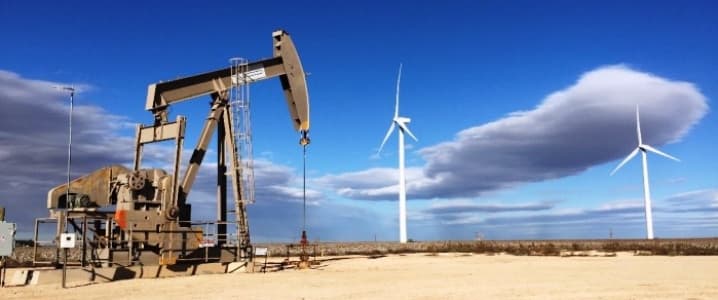Operational improvements in shale and non-shale oil drilling, on top of lower expenses for oilfield services and access to pipeline capacity, have driven down the costs of producing the fossil fuel since the 2014 market crash. But the increase in output has forced barrel prices into a deeper bearish market, causing further damage to corporate bottom lines.
This trend is mapped clearly in the MSCI’s World Energy Index, which measures the progress of large and medium sized companies in 23 oil-producing countries on a quarterly basis. ExxonMobil, Chevron, Total, Royal Dutch Shell, and British Petroleum are the five biggest players on the index, which includes 85 other majors. Together, they have lost $115 billion in market value since the beginning of April, Bloomberg reports, according to World Oil.
The loss pattern isn’t consistent across the board, though. Chevron and Exxon reported strong Q1 2017 figures, beating expert expectations. Chevron took in $2.3 billion in the first quarter of this year, compared to a loss of $725 million in the same period in 2016. Its cash flow more than tripled to $3.9 billion. Exxon’s profits more than doubled to $4 billion in the first quarter, year-on-year.
“The biggest companies are improving a lot operationally,” Iain Armstrong of Brewin Dolphin Ltd., which owns shares in major energy producers, said, according to World Oil. “But the oil price will continue to drive the shares.”
With the OPEC cut locked in at 1.2 million barrels per day for the next nine months, energy investors do not have much to look forward to in terms of market-shifting changes to fundamentals. Related: The Offshore Boom To Break The OPEC Deal
Things seemed different at the end of 2016, however. In the months following OPEC’s cut extensions in November, the oil sector experienced the best Q1 growth in years. Soon, new production from low-hanging fruit in the Permian and Bakken formations in the U.S., along with a strong output recovery in Libya and Nigeria, buried the OPEC cuts that had been driving the barrel price surge.
Post-crash downsizing caused over 350,000 job losses, with oilfield services (OFS) companies taking the biggest hit, according to data from Houston’s Graves and Co. published last year. Since then, major energy markets, notably Texas, have begun rehiring workers at a snail’s pace. It seems the recovery will not be anything televise-able.
As the number of rigs in the Permian basin climbs, so does the demand and cost of securing essential oilfield services. Oil majors took to scrapping major projects and liquidating assets after the 2014 and 2016 price crashes to balance the books, giving the producers the upper hand in negotiating services contracts for their remaining projects. Now, OFS companies are taking their revenge, and it’s beginning to show.
S&P Global Platts predicts that OFS contracts will be 20 percent more expensive by the end of the year, partly because the best drilling spots have already been taken by the 900+ rigs already online across shale country. The slowdown in production showed on Friday, when Baker Hughes reported the first decline in active U.S. rigs in 24 weeks. The difference was only a single rig, but the end of the massive streak sent a clear message: prepare for a production plateau.
In short, there isn’t any leeway left in the oil price to sustain additional capacity while guaranteeing a profit and avoiding a deep dive in barrel prices. U.S. shale output can only go down from here.
ADVERTISEMENT
By Zainab Calcuttawala for Oilprice.com
More Top Reads From Oilprice.com:
- Oil Price Gains Could Be Here To Stay
- Putin And Trump Set To Face Off Over NatGas Market Share
- Markets Overcome The Crash: Oil Rally Continues



















I believe the largest myth in our industry is believing the US shale will cap the OPEC cuts should demand remain the same or climb.